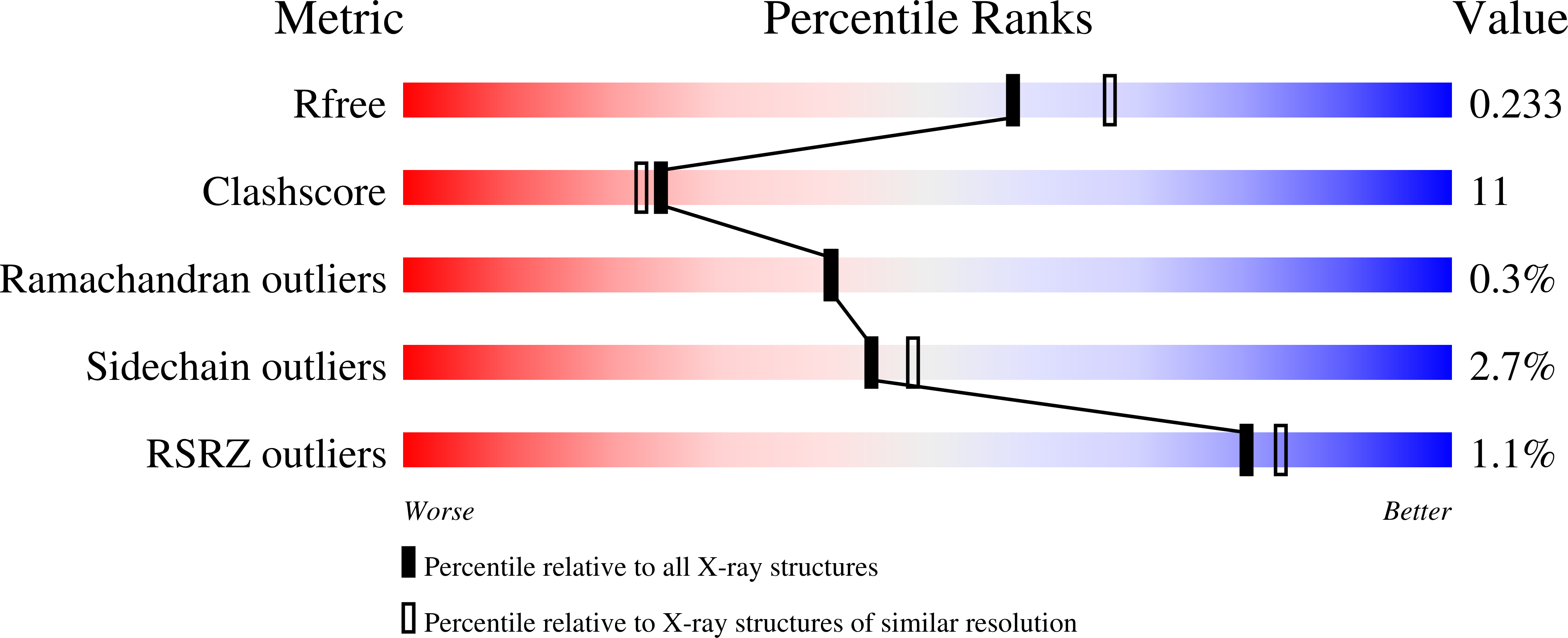Human Gut Bacteroidetes Can Utilize Yeast Mannan Through a Selfish Mechanism.
Cuskin, F., Lowe, E.C., Temple, M.J., Zhu, Y., Cameron, E.A., Pudlo, N.A., Porter, N.T., Urs, K., Thompson, A.J., Cartmell, A., Rogowski, A., Hamilton, B.S., Chen, R., Tolbert, T.J., Piens, K., Bracke, D., Vervecken, W., Hakki, Z., Speciale, G., Munoz-Munoz, J.L., Day, A., Pena, M.J., Mclean, R., Suits, M.D., Boraston, A.B., Atherly, T., Ziemer, C.J., Williams, S.J., Davies, G.J., Abbott, D.W., Martens, E.C., Gilbert, H.J.(2015) Nature 517: 165
- PubMed: 25567280
- DOI: https://doi.org/10.1038/nature13995
- Primary Citation of Related Structures:
4C1R, 4C1S, 4UTF - PubMed Abstract:
Yeasts, which have been a component of the human diet for at least 7,000 years, possess an elaborate cell wall α-mannan. The influence of yeast mannan on the ecology of the human microbiota is unknown. Here we show that yeast α-mannan is a viable food source for the Gram-negative bacterium Bacteroides thetaiotaomicron, a dominant member of the microbiota. Detailed biochemical analysis and targeted gene disruption studies support a model whereby limited cleavage of α-mannan on the surface generates large oligosaccharides that are subsequently depolymerized to mannose by the action of periplasmic enzymes. Co-culturing studies showed that metabolism of yeast mannan by B. thetaiotaomicron presents a 'selfish' model for the catabolism of this difficult to breakdown polysaccharide. Genomic comparison with B. thetaiotaomicron in conjunction with cell culture studies show that a cohort of highly successful members of the microbiota has evolved to consume sterically-restricted yeast glycans, an adaptation that may reflect the incorporation of eukaryotic microorganisms into the human diet.
Organizational Affiliation:
Institute for Cell and Molecular Biosciences, Newcastle University, Newcastle upon Tyne NE2 4HH, U.K.
















